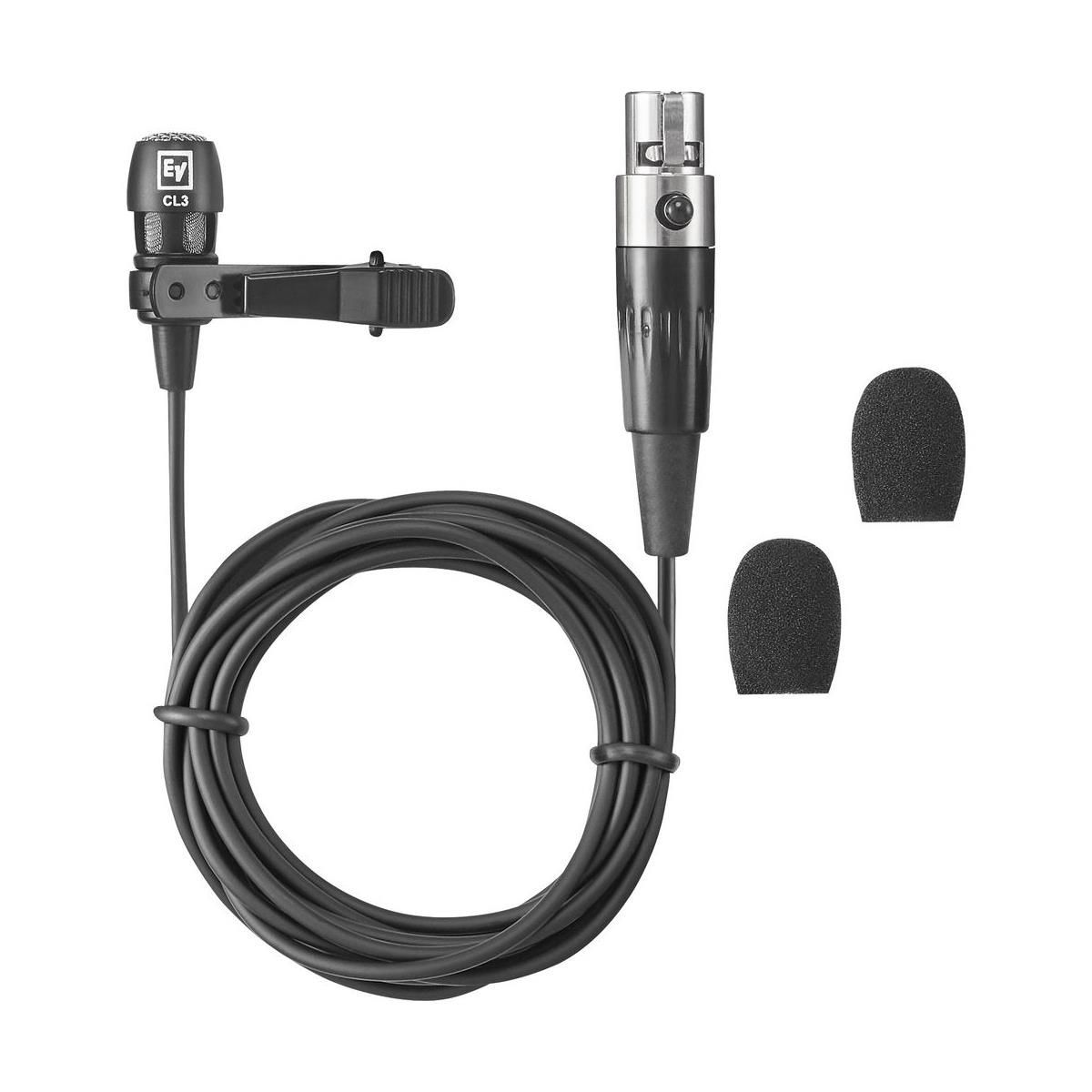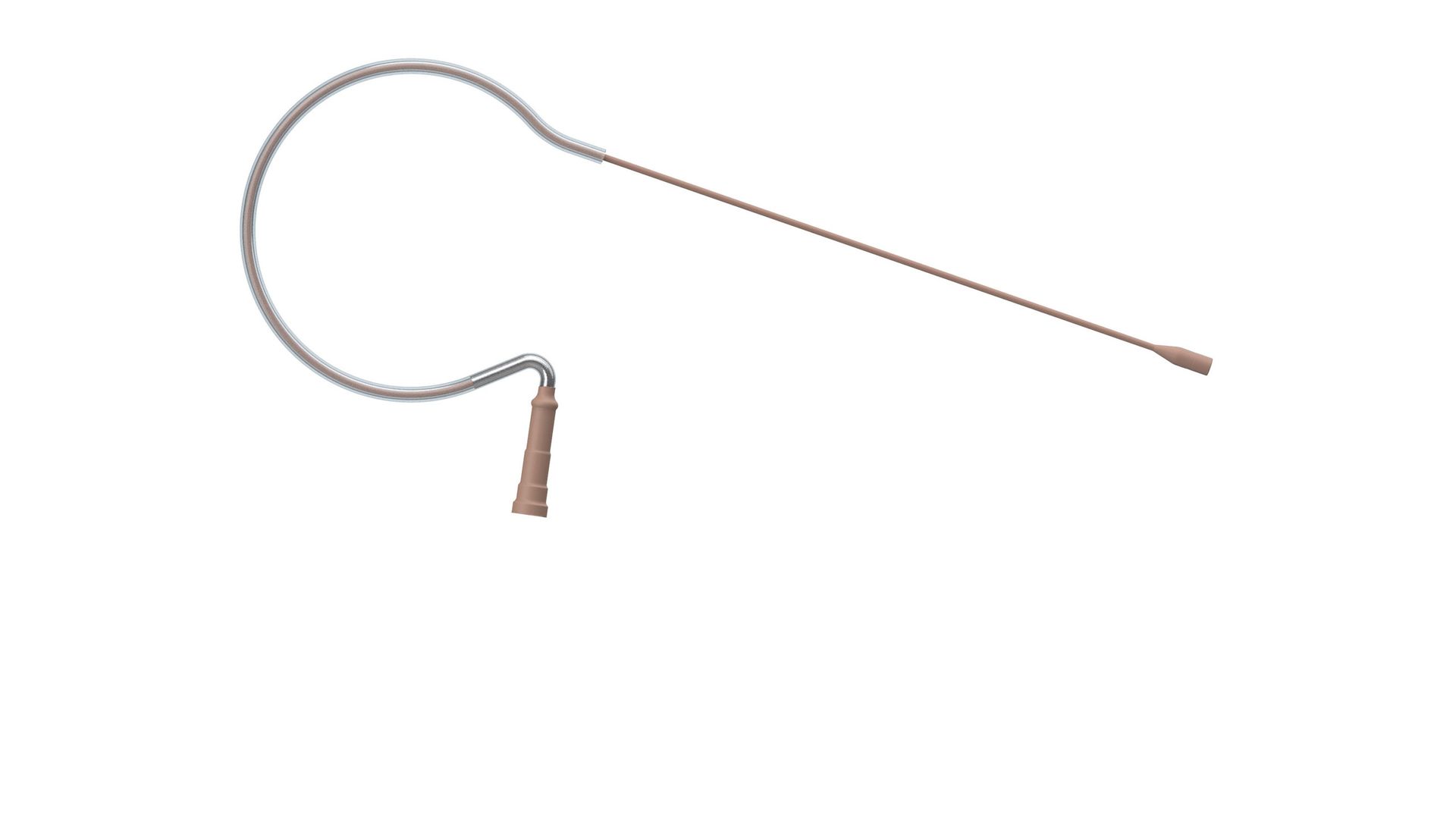Wireless Mics
Wireless microphones are something often taken for granted these days, but there may be more to them than you think. With many types available and new offerings moving into the digital realm, it can be hard to determine what you actually need out of a wireless microphone system, so let’s take a look at the considerations that go into choosing one.
Wired vs. Wireless - which makes sense?
The first thing to consider is whether it even makes sense to have a wireless mic to begin with. If the microphone is always, or nearly always, used in one position, then wired may be the way to go. Wireless microphones are inherently more prone to interference than wired mics. If you are in a densely populated area, or are near known sources of radio frequency (RF) interference, then it is probably best to minimize the number of wireless microphones you depend on. RF interference can change over time due to many factors, and is quite unpredictable, whereas wired microphones are much more reliable. It’s recommended to only employ wireless mics when the speaker is very mobile and really can’t be tethered to one spot. Wireless microphones also have a higher cost of operation because they regularly need new batteries. While rechargeable batteries have come a long way, they will still probably not last as long as the microphone they’re in. Beyond this, wireless microphones are more complex to operate. If you have more than a couple channels of wireless, it’s important that you have someone on your team who fully understands how to operate them. Very often, the problems that arise with wireless mics are easily avoided by simply choosing appropriate frequencies, but due to the unpredictable nature of RF interference, it’s crucial to have someone who is available to make those adjustments at the time the mics need to be used.
Frequency bands - are my current mics legal?
To keep up with ever-expanding demands for wireless communication in other sectors, the FCC has changed regulations regarding what frequency bands wireless microphones are permitted to operate on over the past fifteen years. The auctioning off of the 700 MHz band in 2008 and the 600 MHz band in 2017 both greatly affected wireless microphone operations, as these bands were used by many wireless mics manufactured up until the year the bands were sold. These frequencies were repurposed primarily for public safety communications and commercial wireless purposes, meaning that any microphones you have that operate in these bands are now open to picking up interference from these new users. This is an easy thing to check, as the frequency range of a wireless microphone is usually printed somewhere on a label on the receiver. Unfortunately, if your microphone only operates within a restricted band, there isn’t really anything you can do to change that, it must simply be replaced.
Handhelds, lavaliers, and headsets - oh my!
Another consideration is what type of microphone you need. There are three basic types of microphones used with wireless systems, each with their own strengths and weaknesses, so let’s dig in.
Handhelds are probably the most common type, and are likely what you think of when you think of a wireless mic. They look like many wired microphones do, with a ball-shaped windscreen and a handle, but are often a little bulkier to accommodate the batteries and transmitter being built into the handle. These make great general purpose wireless microphones - they can easily be passed around for different people to speak into, or can be placed in a mic clip on a stand. They sound good and typically require little to no equalization (EQ). The main drawbacks are that they require one hand to hold them if they are not in a stand, and that people sometimes hold them incorrectly, resulting in subpar performance.

Lavalier or lapel mics are the second type. These microphones have very small capsules that are clipped to the speaker’s clothing - around the second button from the top is the recommended position on a button-down shirt - and then plug into a wireless bodypack transmitter, which is clipped to the waistband of the speaker. The main benefits of this type are that they are inconspicuous and allow the wearer to freely use both of their hands. They are very common in churches, as they can be affixed to, or concealed in, vestments or other garments. The main downfalls of these microphones are their sound quality and susceptibility to feedback and other unwanted noise. Because they are farther from the mouth and cannot be aimed precisely, they often sound unnatural and “honky” without EQ. Furthermore, they need to be turned up higher to get a sufficient volume, but this can invite feedback from the main loudspeakers. If you have a system that allows you to apply sufficient EQ to each input, then these problems can usually be mitigated, but if you have a simpler system, you may not be able to get high quality sound from a lavalier mic. Lavalier mics also often pick up mechanical noise if they are tucked into clothing that rubs against them. They can also be problematic when a speaker turns their head, as the capsule cannot follow this motion. That said, their unobtrusive position keeps them a popular option.

The final type of microphone commonly used is headset, headworn, or earworn. These microphones may attach to one or both ears and have a tiny capsule on the end of a small boom that positions it near the mouth. These mics have come a long way from the Crown CM-311A that many call the “Britney Spears” mic. Newer offerings have much lower profiles, and are available in an array of skin-tones to blend in better. Their position and proximity to the mouth lead to them generally being much better and more consistent sounding than lavalier mics, while retaining most of the strengths of a lavalier. Their drawbacks include their price, comfort, and fragility. While there are many affordable models on the market, those tend to be bulkier and more noticeable. If appearance isn’t a major concern, they can still offer a marked improvement over lavaliers, but generally a good earworn mic will cost more than a comparable lavalier. As for comfort, these mics have again come a long way from their roots and many people find them quite comfortable, but others simply cannot adjust to having the microphone on their head or ears. Finally, these mics tend to be the most fragile of the three types discussed here. Higher end models are available with replaceable cables to help offset this, and these mics can still provide years of trouble-free service if properly cared for. Ultimately, all three types have their place, and most facilities with more than two wireless mics tend to have a mix of types.

Analog vs. Digital - what’s the difference?
More and more wireless systems are going digital these days, but what does that mean for the end user? Mostly good things, it turns out, as digital wireless systems have several advantages over analog ones, and really only one disadvantage. For one, digital has far greater spectral efficiency. This means that it can carry a lot more channels in the same amount of frequency bandwidth. Where you might only have one or two analog wireless channels, new digital systems can have as many as sixty-three! Another advantage of digital microphones is superior audio quality. Because the audio is converted to digital before transmission, you get full spectrum audio with its original dynamic range perfectly intact. Analog microphones necessarily limit the bandwidth and furthermore use companding to try and maintain their dynamic range, which can result in some audio artifacts such as “breathing” or “pumping” being introduced. Digital wireless microphones are also more power efficient, meaning your batteries will last longer in a digital mic than in an analog one. This can add up to a significant savings over the life of a microphone. Some digital wireless systems even offer encryption and other security measures. This makes them especially suitable for corporate use or anywhere privacy may be of extra concern. The only real drawback of digital wireless systems is latency. While an analog wireless system provides an instantaneous transmission of sound, a digital system adds a small amount of latency (typically less than 5ms) due to the conversion from analog to digital and back. This amount does not usually bother users, but if additional latency is being introduced elsewhere in the sound system, then it can add up and be a problem.
Accessories - really getting the most out of your system
Once you have determined what wireless system you need, it’s time to round it out with the appropriate accessories. One item that is often overlooked, but can be very helpful for any system incorporating more than two wireless mics, is an antenna combiner. These units allow multiple wireless mics (usually up to four per combiner) to operate on just one pair of antennae, eliminating a messy cluster of antennae in your rack or on your desk. If you have more than four wireless mics, you can usually cascade multiple antenna combiners to accommodate them all. Not only does this decrease clutter, but it usually makes for better, more consistent performance of the wireless mics. Additionally, many antenna combiners provide power for the receivers, reducing the mess of wall wart and line lump power adaptors that usually accompany a group of wireless mics. Another type of accessory to consider is antennae. Most wireless systems come with a rubberized miniature helical antenna of some sort, and while these very often get the job done, there are several other types of antennas offered that can increase range or help reject interference. Directional antennas like paddle, dome, and larger helical antennas, can be aimed at where the wireless user is and reject signals from other directions. Active antennas are also available, which have a built-in amplifier to boost the signal they receive, increasing the range of the receiver. Finally, you may want to consider rechargeable batteries and related accessories, such as battery chargers or charging stations. It is recommended that you go with rechargeable battery packs provided by the wireless system manufacturer, as generic rechargeable batteries may not give satisfactory performance.
